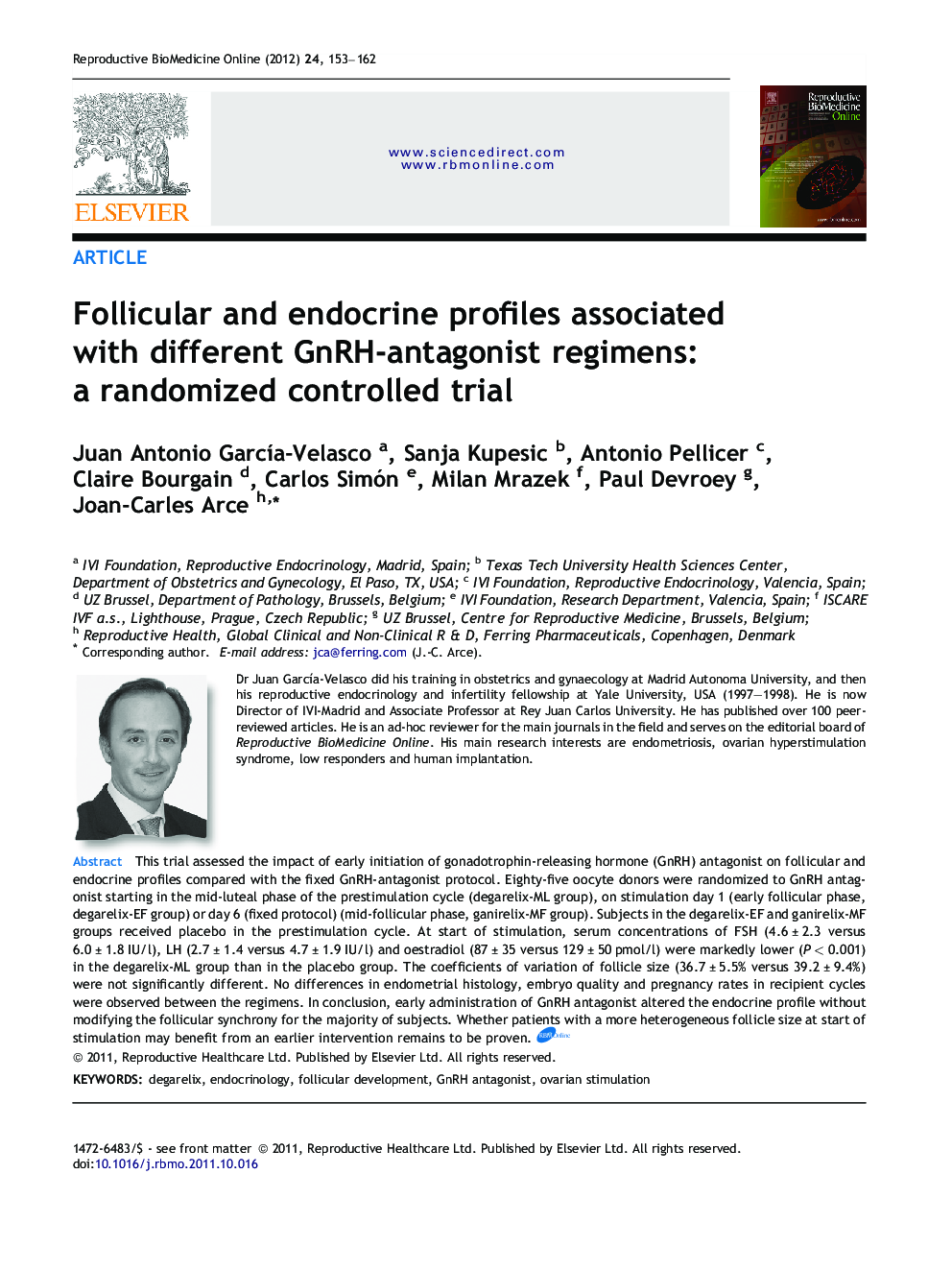| Article ID | Journal | Published Year | Pages | File Type |
|---|---|---|---|---|
| 3971171 | Reproductive BioMedicine Online | 2012 | 10 Pages |
This trial assessed the impact of early initiation of gonadotrophin-releasing hormone (GnRH) antagonist on follicular and endocrine profiles compared with the fixed GnRH-antagonist protocol. Eighty-five oocyte donors were randomized to GnRH antagonist starting in the mid-luteal phase of the prestimulation cycle (degarelix-ML group), on stimulation day 1 (early follicular phase, degarelix-EF group) or day 6 (fixed protocol) (mid-follicular phase, ganirelix-MF group). Subjects in the degarelix-EF and ganirelix-MF groups received placebo in the prestimulation cycle. At start of stimulation, serum concentrations of FSH (4.6 ± 2.3 versus 6.0 ± 1.8 IU/l), LH (2.7 ± 1.4 versus 4.7 ± 1.9 IU/l) and oestradiol (87 ± 35 versus 129 ± 50 pmol/l) were markedly lower (P < 0.001) in the degarelix-ML group than in the placebo group. The coefficients of variation of follicle size (36.7 ± 5.5% versus 39.2 ± 9.4%) were not significantly different. No differences in endometrial histology, embryo quality and pregnancy rates in recipient cycles were observed between the regimens. In conclusion, early administration of GnRH antagonist altered the endocrine profile without modifying the follicular synchrony for the majority of subjects. Whether patients with a more heterogeneous follicle size at start of stimulation may benefit from an earlier intervention remains to be proven.The use of gonadotrophin-releasing hormone (GnRH) antagonist protocols in patients undergoing IVF, in which the antagonist is administered from stimulation day 5 or 6 (fixed protocol), has been associated with more heterogeneous follicle growth. Also, the hormone environment at start of stimulation in the GnRH-antagonist cycle may influence clinical response and outcome. The present trial assessed the impact of earlier start of GnRH-antagonist treatment on follicular and hormone profiles compared with the fixed protocol. Eighty-five oocyte donors were randomized to GnRH antagonist starting in the mid-luteal phase of the menstrual cycle prior to stimulation, on stimulation day 1 or on stimulation day 6 (fixed protocol). Subjects starting GnRH antagonist treatment on stimulation days 1 or 6 received placebo in the prestimulation cycle. At start of stimulation, serum concentrations of the hormones FSH, LH and oestradiol were markedly lower in the GnRH-antagonist group than in the placebo group. The follicle size heterogeneity was not different between the two groups. No differences in uterine histology, embryo quality and pregnancy rates in recipient cycles were observed between the regimens. The results indicate that the general IVF population will not benefit from an early start of GnRH-antagonist treatment. Whether patients with a poor response in a previous cycle, possibly due to a more heterogeneous follicle size at the start of stimulation, may benefit from an earlier start remains to be proven.
